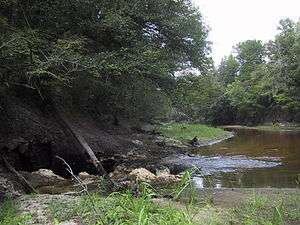Surface water

Surface water is water on the surface of the planet such as in a river, lake, wetland, or ocean. It can be contrasted with groundwater and atmospheric water.
Non-saline surface water is replenished by precipitation and by recruitment from ground-water. It is lost through evaporation, seepage into the ground where it becomes ground-water, used by plants for transpiration, extracted by mankind for agriculture, living, industry etc. or discharged to the sea where it becomes saline.
Conjunctive use of ground and surface water
Surface and groundwater are two separate entities, so they must be regarded as such. However, there is an ever-increasing need for management of the two as they are part of an interrelated system that is paramount when the demand for water exceeds the available supply (Fetter 464). Depletion of surface and ground water sources for public consumption (including industrial, commercial, and residential) is caused by over-pumping. Aquifers near river systems that are over-pumped have been known to deplete surface water sources as well. Research supporting this has been found in numerous water budgets for a multitude of cities.
Response times for an aquifer are long (Young & Bredehoeft 1972). However, a total ban on ground water usage during water recessions would allow surface water to better retain levels required for sustainable aquatic life. By reducing ground water pumping, the surface water supplies will be able to maintain their levels, as they recharge from direct precipitation, surface runoff, etc.
See also
References
- Applied Hydrogeology, Fourth Edition by C.W. Fetter.
- R.A. Young and J.D. Bredehoeft Digital simulation for solving management problems with conjunctive groundwater and surface water systems from Water Resources Research 8:533-56
External links
- "Surface Water," Iowa State University
